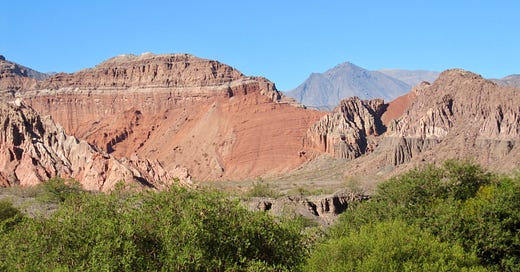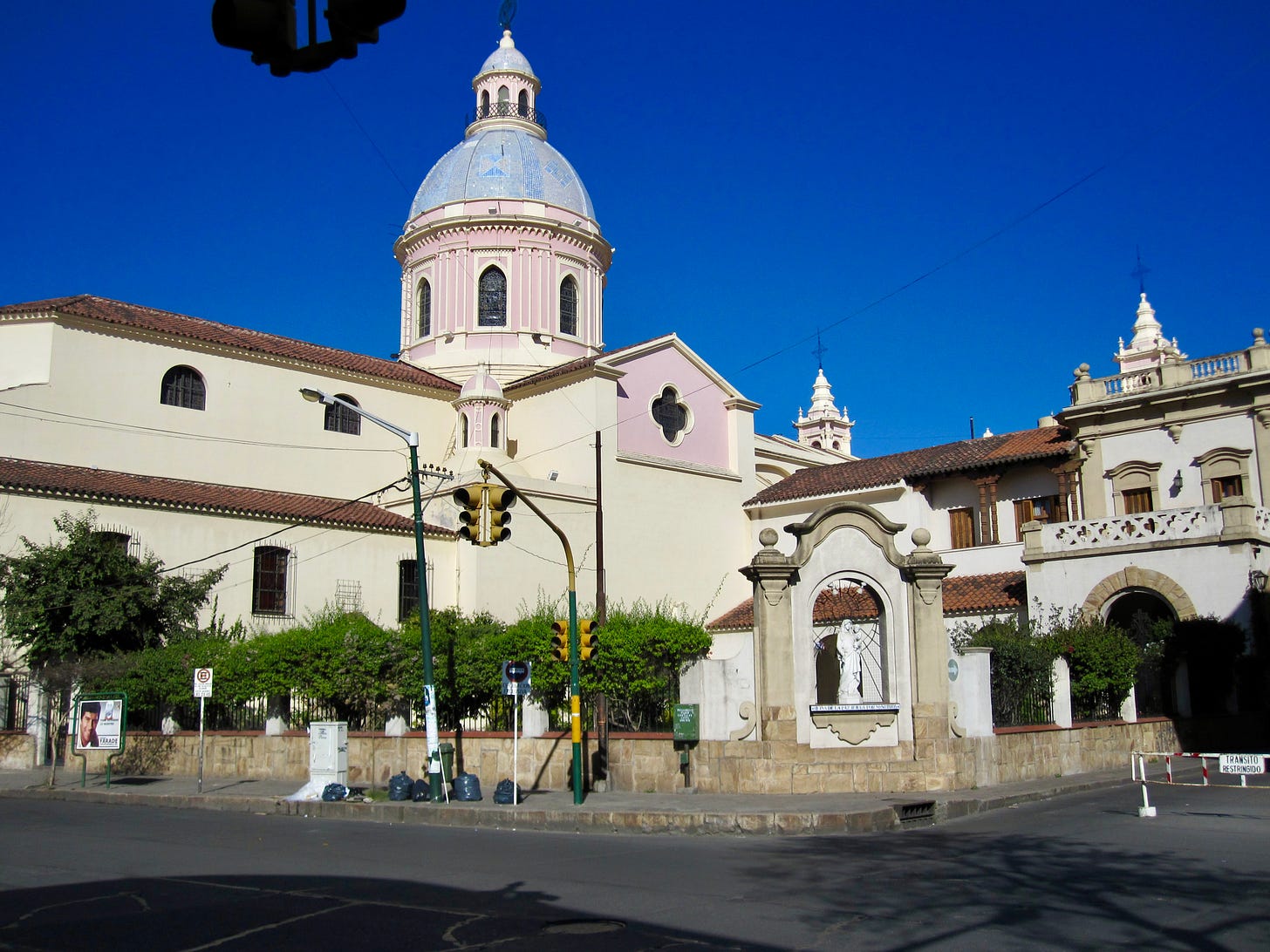Salta, Argentina: The Ultimate Guide
A journey through Salta's rich culture and stunning landscapes.
Salta is one of the most northwestern provinces in Argentina, situated around 930 miles (1,500 km) from Buenos Aires. The provinces’ close proximity to the Andes and Bolivia has resulted in prevailing indigenous and rural cultures, thus, a region of Argentina that will feel far removed from its Europeanized urban centers. Prior to Spanish arrival, Argentina’s northwest was a hotbed for indigenous groups, most notably the Diaguita-Calchaquí. In fact, when traveling around the region today you can frequently encounter communities of Quechua people.
There are myriad things to do in this region of Argentina and it’s traditionally one of the cheaper areas to travel. Rent a car and take a road trip through one of the country’s most dramatic and scenic routes, the Quebrada de Cafayate. Tour the bodegas of the Calchaquíes Valley in Cafayate and Chachi, which is famous for growing the Torrontés grape. Admire the colonial architecture in Salta City, then catch El Tren a las Nubes, a train that trundles through the mountains to a plateau some 13,845 feet (4,220 meters) above sea level.
The region is great to visit at any time of the year, and Salta is particularly famous for its agreeable year-round climate. If there was an ideal time to come then it would be in spring and the beginning of summer (September to December). During this period, daytime temperatures fluctuate between 74°F and 84°F (23°C and 30°C), with lows rarely falling below 50°F (10°C). Spring is also the dry season. At the height of summer, temperatures can hit the 104°F (40°C) mark, and flash thunderstorms occur. Autumn is another great season, as the summer rain gives life to the mountainous landscape and creates a sweeping panorama of greenery.
Salta City
The city of Salta is, by a long stretch, the tourism capital of Argentina’s northwest region. It’s a city where the old converges with the new and where the old comes out on top. Whether arriving from Buenos Aires or crossing the border from Bolivia, you’ll notice instantly the laidback lifestyle. Time often feels as though it has stood still around the cobblestone streets of the city center, which is blessed with colonial architecture. Tradition runs deep here, most notably during Carnival when locals hit the streets to pay homage to Pachamama, the Incan goddess of fertility.
Founded in 1582 by Governor Hernando de Lerma of Tucumán, today the city is commonly known as Salta la Linda (Salta the Pretty). The city’s name originates from the word sagta, which means beautiful in the language of the Aymara people. Unlike other Argentine cities, Salta didn’t witness a wave of mass immigration. However, what the city missed out on in European influence, it benefited by maintaining the traditions of the Diaguita-Calchaquí indigenous group and other Inca tribes.
Despite being in the far north of Argentina, Salta is well-connected by air. Regular flights arrive from Buenos Aires, Córdoba, Mendoza, Neuquén, and Puerto Iguazú. If you’re taking the bus, it’s around 20 hours from Buenos Aires. The city’s main terminal is on Parque San Martín, about a 10-minute drive from the main square. In addition to Buenos Aires, cross-country bus services connect with Catamarca (7 hours), Mendoza (18 hours), Rosario (16 hours) and Tucumán (4 hours). Rent a car when in Salta to explore the towns and villages of Quebrada de Cafayate and Quebrada de Humahuaca (see below).
The slower lifestyle means that driving is a pleasurable experience. Major rental companies have offices in the city, such as Hertz (Caseros 374) and Europcar (Córdoba 20). You can also go local with Activa Rent a Car (Vicente Lopez 369) and Fox Car Rental (Caseros 231).
What to See and Do
From architecture and museums to artisanal markets and hilltop lookouts, there’s plenty to see and do in Salta. Start your visit at Plaza 9 de Julio, the city’s main square. On its north side is the stunning Salta Cathedral (España 596). It houses the ashes of General Martin Miguel de Güemes, an important figure during the wars of independence. The interior of blue, green, and gold is spotless, as is the impressive cathedral organ. There’s also a small museum that holds religious relics.
From the cathedral, walk over to the Museo Arqueologiá de Alta Montaña (Mitre 77). If you only visit one museum in Salta, then make it this one, which dedicates itself to the preservation of Andean culture and anthropology. The highlight is the so-called Llullaillaco Children, three mummified and perfectly preserved Inca children discovered at Llullaillaco Volcano in 1999. Historians believe the children were sacrificed in a fertility ceremony or as an offering to the Incan gods around the year 1490. To maintain the preservation, only one is on display at any one time. On the south side of Plaza 9 de Julio is the Museo Histórico del Norte (Caseros 541). Housed in Salta’s original Cabildo (Town Hall), the museum contains displays of Salta’s Indian and colonial history, in addition to art exhibits.








